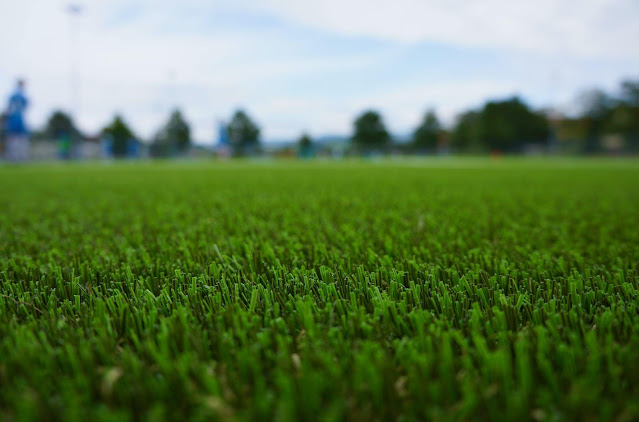Before installing artificial turf, it is necessary to clear away existing grass and level the ground. This process can either be accomplished yourself or with assistance from professionals.
Preparation
Installing artificial turf can not only save money but also help you achieve the look of a lush and beautiful lawn without all of the effort of regular maintenance. This can be especially helpful for busy individuals without enough time or energy for extensive lawn renovation.
Installing synthetic grass may reduce weed growth significantly – meaning less time spent trimming unwanted weeds!
Installing synthetic grass can also save on watering costs as a synthetic lawn doesn’t need as much hydration as real lawns, potentially saving a substantial amount on your water bill and helping conserve resources for other parts of the house.
There are various materials used to fill artificial turf surfaces, including silica sand, crumb rubber, zeolite (a moisture-absorbing volcanic material), walnut hulls and acrylic-coated sand. Each has their own advantages and is best suited to specific situations.
Before beginning installation, it is essential to determine what material you will use for your lawn. This will allow you to choose a color and material that meet both your preferences and needs. A high-quality artificial turf company can help you with this decision. They can provide expert guidance whether you are looking for a DIY project or a full-service installation.
For instance, when choosing synthetic grass for use on an unshaded patio or deck area, polypropylene should be preferred due to its ability to withstand heavy foot traffic without showing signs of wear and tear. Further more, polypropylene resists stains well and doesn’t fade quickly which is ideal if longevity of use is integral for you.
Also Read: What Can Make Your Home Special?

Installation
An essential aspect of installation is creating an even, solid surface. To do this, any existing grass and obstacles must be cleared away, and then an even layer of crushed miscellaneous base material must be spread over an even base and compacted to ensure an ideal smooth finish.
Once the base layer has been laid down, weed barrier fabric should be spread on top to stop any further growth of weeds from coming through and spreading through. This step is especially helpful if your soil beneath artificial turf has plenty of weeds already growing within it – in which case, an expanse of landscape fabric long enough to cover the whole area in which you wish to install turf will be required for its installation.
Once the weed barrier fabric is in place, layer a thin layer of compacted sand or decomposed granite over it to provide a firm foundation for the turf and prevent sinkage that would create divots in its lawn. A minimum thickness of one-inch gravel or sand should be spread for best results.
Next, roll out the turf and ensure each section is laid out in an even manner to prevent fibers from looking disorganized and ensure that your turf looks its best. This will help avoid random fibers appearing throughout your lawn.
Once the turf has been installed, you can begin securing it to its foundation and making final trims and connections. At this stage, use turf glue or outdoor tape to join pieces together as well as connect edges; using S-shaped seams is also advised so as to cover any unsightly lines.

Maintenance
Artificial turf fields must be regularly maintained to remain safe for users. Without regular attention, damage may occur and hard spots could form, necessitating expensive repairs or replacement.
Although some work can be accomplished independently, professional help should always be sought to maintain your field’s appearance and save money over time. You should also learn how to care for your turf properly so you can save on costs in the future.
First and foremost: when cleaning artificial turf it is necessary to remove large pieces of debris. This can be accomplished manually or using tools such as rakes and brooms. After this has been accomplished, vacuum the area using either a standard vacuum cleaner or garden hose attachment.
Regular brushing of your lawn to remove dirt and dust is also essential in helping restore blades back to their original shapes and prevent them from being trampled by visitors. Brushing also redistributes sand infill essential for supporting blades of grass.
Leaf blowers can help speed up this process. Regularly cleaning is important for keeping mold and mildew at bay and protecting the area against contamination.
Final tip for best results on synthetic lawns: brush it frequently to help clear away any excess dirt or dust accumulation that might be plaguing it, keeping your lawn looking its best while leaving its scent natural and lasting fresh. You can click the link: https://www.wikihow.com/Clean-Artificial-Grass for more tips on how to care for your lawn.
Artificial turf infill material – composed of rubber granules and sand – may become clogged with dirt and leaves over time, creating uneven playing surfaces that compromise its performance. To restore optimal field playback conditions and ensure peak playing performance for players on this field, regular sanding must be undertaken to keep its infill material level and free of debris build-up.
No matter whether it is being installed for residential or commercial property, it is essential for complete the installation properly in order to ensure the best, most long-lasting results. Taking time and care in installing it properly will help maintain an artificial lawn for years to come.



More Stories
How to Organize a Small Kitchen – 5 Masterful Ways
Step into Dimension: How 3D Wallpapers Redefine Interior Decor
Ideas for Choosing the Best Kitchen Colors